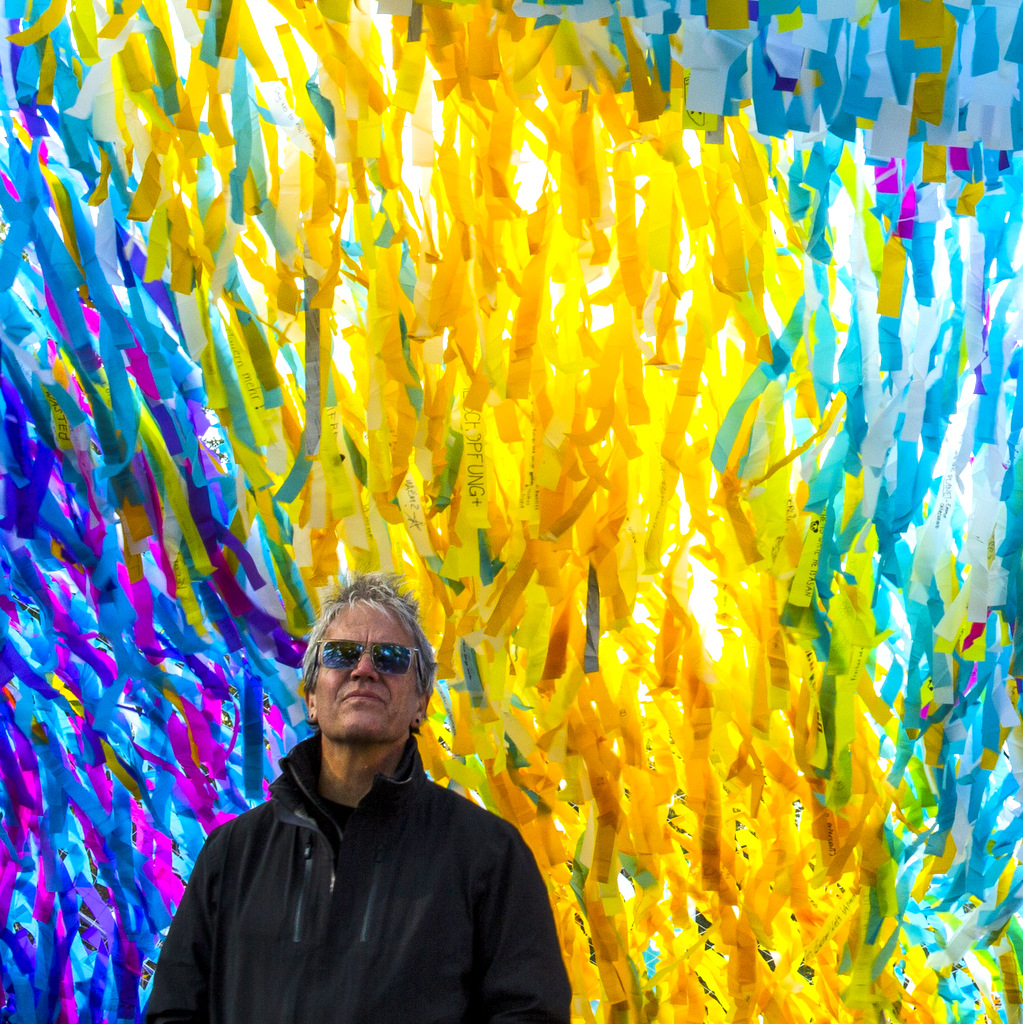
Enormous, aesthetically striking, sustainable, colourful, often interactive and mobile are the sensational and remarkable works of Poetics Kinetics. Here the interview with Patrick Shearn, Poetic Kinetics's father.
Image: Patrick Shearn, Visions in Motion, Berlin, 2019, credit Markus Eberhardt
Enormous, aesthetically striking, sustainable, colourful, often interactive and mobile are the sensational and remarkable works of Poetics Kinetics. Here the interview with Patrick Shearn, Poetic Kinetics's father.
AD: When Poetic Kinetics was founded? How many are you?
Patrick Shearn (PS): Poetic Kinetics was founded in 2008. Someone had seen the giant flower I did at Burning Man and offered me the opportunity to produce and build a giant puppet show for the Beijing Olympics. In the process of saying yes to that, my partner and I founded the company in order to complete the project in China. In 2016, following the success of an installation I did in Los Angeles, called "Liquid Shard," the studio became a full-time operation. We have about 10 full time staff and work with very talented builders, riggers, sewers and artists to realize our works.

Warrior and Girl, 2008, Beijing
AD: When and where did you start your carrier as artist? And when did you start having such grandiose visions?
PS: I can't remember a time I wasn't creating. In my family, the way my siblings and I were raised, making art was something you just did. We were encouraged to question everything, ask "what if this were different?" and to propose a solution. The work we made wasn't precious. Some projects would end up celebrated on the fridge and some in the wastebasket. The product wasn't as important as the process of creating, and creating prolifically.

Warrior and Girl, 2008, Beijing
My career started in special effects for film and I moved to digital effects when I saw the writing on the wall for that industry. After 30 years in film, I co-founded Poetic Kinetics. Once I started producing projects at the scale I could achieve with the studio, it's what I wanted to focus on most.
The large-scale art installations of Kinetics Poetics are impressive. What are your main sources of inspiration?
A lot of my work is in homage to the awe I experience in witnessing natural phenomena. With the Skynet series, for instance, I was blown away by the synchronized motion of starlings, called murmuration, and I sought to simulate that. I'm also very inspired by play-- interactivity is a tool we like to use to engage viewers of the work out of passivity to become participants in an experience that is co-created with them.
AD: What is the textile you use in your moving, floating installations?
PS: We mostly use an ultralight ripstop nylon for the Skynets, although we are always expanding our materials library.

Reflection Rising, 2017-2018, Scottsdale
AD: I saw your beautiful work in Berlin for the 30th Fall of the Wall Anniversary. Looking at all those messages floating and seeing people writing their wishes was moving. Can you say more about that work? What did it symbolise? And is it travelling somewhere else?
This artwork was a massive collaboration with the people. It was particularly gratifying to meet and speak with so many people from all over the world and to realize that our messages of hope and peace are largely the same. We are taught to fear each other, when in reality, there is no other. We do hope to exhibit this work again and continue to showcase its cumulative message of unity, resistance and love.

Visions in Motion, Berlin, 2019, credit Markus Eberhardt

Visions in Motion, Berlin, 2019, credit Markus Eberhardt
AD: Then there are Prius Solar Flower Lounge, Solar Sunflowers and the Aztec Pavilion in Texas that are composed by solar panels. How those solar panels art projects started? From a commission or from your own creations?
PS: A lot of what we do is creative problem solving. Clients might come to us with part of an idea, or something they want to achieve and we create an aesthetic and functional solution to fit the need. In other cases, we're proposing something for a blank canvas. Every opportunity is different, but we always push the envelope and strive to bring a vision to life with our work.

AD: Are most of your works site-specific?
PS: Yes, most of the work that we do is site-specific in order to create something unique that converses with the space. We always take the display environment into account with our work because often, I'm very interested in communicating a feeling, or facilitating an immersive experience, and the architecture of our surroundings has a profound effect on how we think, feel and behave.